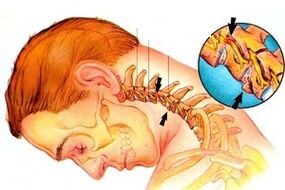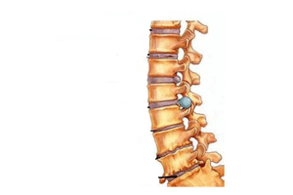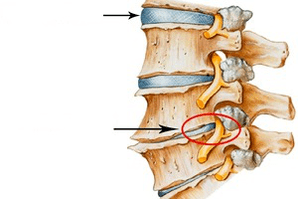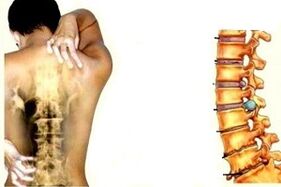
Diseases in the musculoskeletal system are one of the most common diseases on earth.Few people manage to avoid them completely, especially after 40 years, although experts admit that problems with the spine, muscles and joints have "younger" and that very young people complain more and more pain.
The lack of this is the way of life, which is already familiar with a lot: inactivity, the prolonged stay in a position (most often behind gadgets and monitors), lack of physical activity.Consequently, the posture is disturbed, the salts and other harmful substances accumulate in the body, the functions of the musculoskeletal system are altered and, therefore, the internal organs can be deformed.
Most often, osteochondrosis is from such illnesses, to which people are subjected both older and fairly young, and among the problems of osteochondosis with the lombo-sacular and cervical spine.The second type of osteochondrosis, the most frequential, cervical, is an unpleasant, and in addition - gradual disease, without treatment, considerably aggravating the lifestyle to disability.This means that it is necessary to recognize the symptoms of this disease in a timely time and to contact an orthopedist or a vertebrologist for treatment.
How cervical osteochondosis develops
If a person leads a sedentary lifestyle or, due to his profession, is in the same position for a long time, the risk of encountering osteochondrosis is very high.With the development of the disease, changes occur in the intervertebral discs, they are deformed and change their structure.
The intervertebral discs are located between the vertebrae, their task is to maintain the spine, to make it flexible and durable.There are seven vertebrae in the neck, with the help of which the head is supported and turned, the neck and so on.The cervical vertebrae are located very close to each other, so they are injured and moved even with a minor physical effort.The danger of the disease lies in the fact that the nerve endings of the vertebral nerves are affected, due to which the vessels which provide the brain of the brain are affected.In turn, the brain does not receive vital substances, which can lead to the development of a number of other more serious illnesses which can cause a handicap and even the death of the patient.
There are many causes and development of cervical osteochondosis.Among the most common and frequent reasons, the following elements can be distinguished:

- Metabolism altered in the body, in particular in the cervical region, hormonal imbalance;
- Salt depot;
- Low physical activity, sedentary lifestyle;
- Long stay in a pose (on the computer, the steering wheel of the car, etc.);
- bad nutrition;
- Excess weight;
- neck injuries and bruises;
- body hypothermia.
Osteochondrosis also occurs in the context of chronic diseases of the musculoskeletal system, such as scoliosis or rheumatism.
In addition, osteochondrosis often leads to a genetic predisposition of the body.
But whatever the causes, osteochondrosis should be treated as soon as its first symptoms appeared.
Signs of cervical osteochondosis
Osteochondrosis in this spine does not always arise strongly and unexpectedly.Most often, it develops slowly and the symptoms are intensifying over time, their number increases.The more the vertebrae are damaged and the nerve roots are damaged, the more perceptible the signs.
The first symptom that should be paid is the pain of a different force in the cervical column, which gives other parts of the body - the back of the head, the forehead, the ears, the forearm, the shoulder, the chest, etc.In case of pain, see a doctor to determine if it is really osteochondosis, which is often similar in symptoms with other diseases.
Other signs of osteochondrosis
- The pain in the neck is improved by loads or tours of the head;
- The patient feels numbness, burns or tingling in the limbs;
- Headaches and dizziness, a breakdown, the patient can complain about darkening and steals in his eyes, noise in his ears;
- With a clear turn of the head, the fainting is likely.
Osteochondrosis is also characteristic of cervical osteochondosis:
- violation of coordination;
- pain in the heart;
- Deterioration of vision and hearing.
Osteochondrosis varieties
Depending on the type of nerve pinch and the nature of the development of the disease, doctors distinguish several syndromes:
- spine syndrome;
- vertebral artery syndrome;
- Cardial syndrome.
Root syndrome is a pinch of the first pairs of cervical nerve endings.The pains are felt in the neck, they are given in an shoulder blade, lower back, shoulder, forearm.
With the vertebral artery syndrome, the patient experiences pulsating pain on the back of the head or temples or burning pain in the neck, the back of the head, which improves the head, during sleep, with coughing, gives it to the chest, to the shoulder.
With cardiac syndrome, symptoms first look like angina, but pain does not pass after taking nitroglycerin, lasts several hours and can intensify during movement and deep breathing.
Damage symptoms with specific vertebrae
The treatment of osteochondrosis is prescribed according to the end of the nerve has been damaged.There are only eight, each of them is above the cervical vertebra.It is possible to determine which vertebrae is struck by symptoms corresponding to a certain nerve spine.
Damage the nervous end and characteristic pain

- The first and second departments: the sensitivity of the back of the head, the pain in the parietal and occipital region is broken;
- The third department: numbness of the neck in the pinch of pinching, speech disorders, the sensitivity of the language;It rarely happens;
- The fourth department: pain and numbness in the collarbone and / or the shoulder, violations of the respiratory system, heart pain;
- Fifth section: shoulder pain, pain in the outer surface of the shoulder, altered sensitivity of the limbs;
- The sixth and seventh departments: pain in the neck, blade, forearms, back, lower back, altered sensitivity of hands, fingers;The most frequent defeat;
- The eighth department: pain in the neck, the back, the elbow, the numbness of the little fingers of all the limbs, the bluish legs and the brushes due to the blood circulation disorders, the lack of skin sensitivity and gives it to the legs.
Diagnosis and treatment of cervical osteochondosis

To reliably establish the diagnosis of "cervical osteochondosis", you must certainly consult a doctor.Many symptoms of osteochondrosis are similar to signs of other diseases, so it is important not only in time to start treatment of osteochondrosis, but also not to miss another pathology.
In case of suspicion of osteochondrosis and signs of pinching nerve endings, the doctor prescribes radiography, with magnetic or magnetic resonance tomography of data failure, an ultrasonic additional dopplerography and duplex scan.
On the basis of these studies, the nature of the pain syndrome and all of the other symptoms, you can determine which discs are damaged and start the necessary treatment, which will restore the vertebrae and the affected nerve roots and will not allow the complications of osteochondosis to develop.
The treatment is prescribed by the doctor, it is generally complex.First of all, it should relieve the symptoms of pain which, with cervical osteochondosis, are sometimes practically unbearable and spread not only on the neck, but also to other parts of the body.
To do this, use pain relievers in the tablets, but in the case of too severe pain, non-steroidal anti-inflammatory drugs, as well as warming and pain relievers, are indicated.
Since drugs and ointments only relieve pain and other symptoms of neck osteochondrosis, but do not get rid of its cause.Once the painful sensations have been reduced, the patient is prescribed massages, physiotherapy and physiotherapy.The patient has a diet, drugs that improve blood circulation and support bodily functions, in tablets and injections, as well as chondroprotectors who help protect and restore tissues from intervertebral discs.
In some cases, baths, paraffin applications, reflexology, hirudotherapy are prescribed as an additional treatment to the patient.Popular methods of treatment of cervical osteochondosis often help quickly bring the patient back to the usual lifestyle, but they should only be used in combination with traditional methods and after consulting a doctor, because traditional medicine can have contraindications, and the use of its prescriptions can harm the body if weakened by the body.
Complications and prevention of the disease

Remember: treatment of cervical osteochondrosis should be started as quickly as possible.The longer you delay a visit to the doctor, the more difficult it will be to cure the disease and, in the meantime, it can cause various complications.Osteochondrosis of the cervical spine is very dangerous since in this section there are many blood vessels and nerve plexuses that nourish the brain.
Any violation can cause brain traffic problems, neurological disorders, including migraines and hypertension, affect the heart, the respiratory system, hearing, vision.
If osteochondrosis is launched, more serious consequences are possible in the form of cerebral ischemia, stroke of the spine or radiculopathy - a disease in which the processes are formed on the affected vertebrae, partially or completely depriving the body of sensitivity and mobility.But it is not the worst thing, because in severe osteochondrosis, the spinal cord is compressed, which can cause the patient's death.
Therefore, it is very important to listen to the symptoms as soon as possible and turn to a specialist who will help you return to a full life.And in order to avoid a disease such as cervical osteochondrosis, you must move more, do not avoid physical activity, do not monitor the weight, eat properly and balance, and also regularly visit an orthopedic or vertebrologist.

























